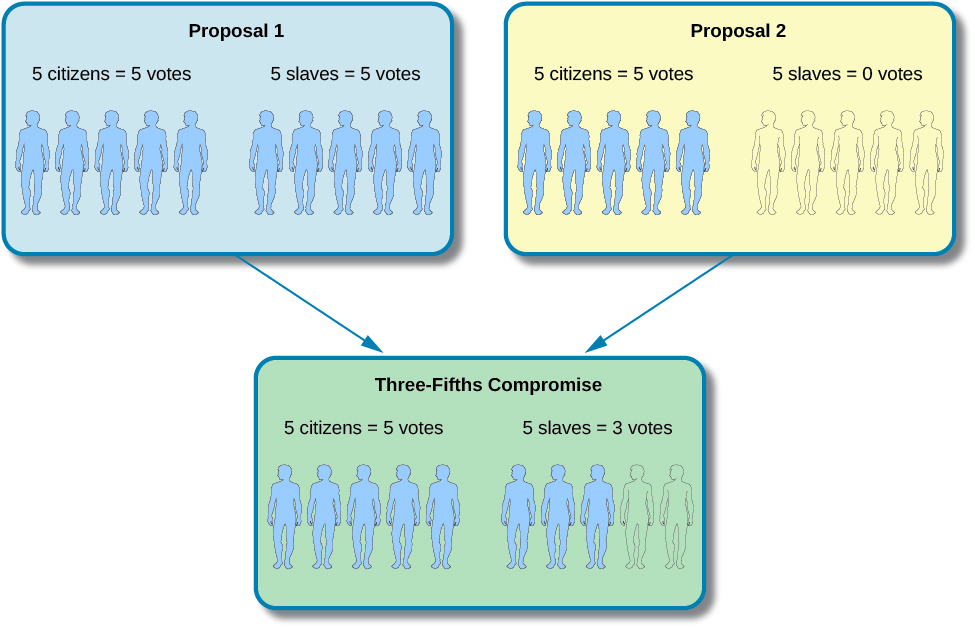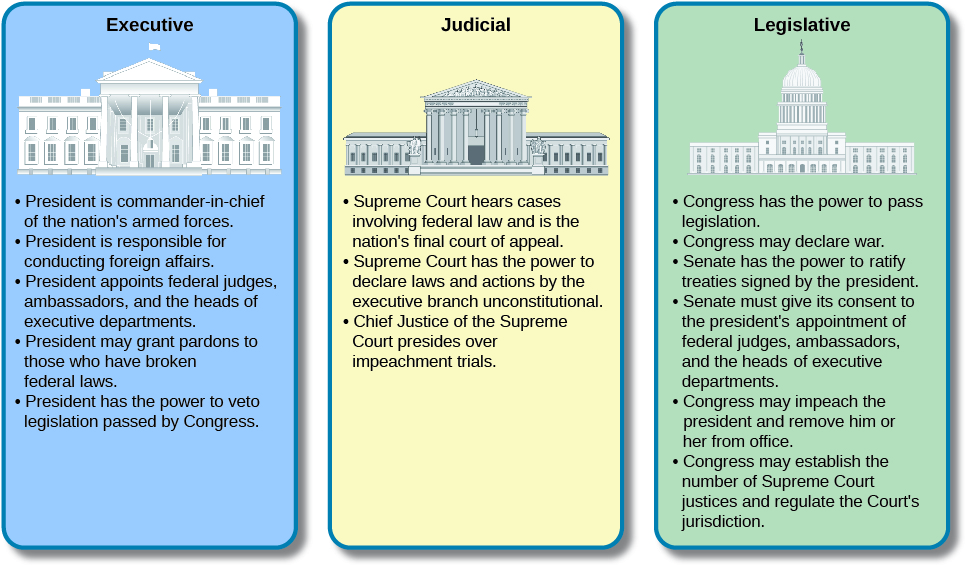| << Chapter < Page | Chapter >> Page > |

Indeed, the Constitution contained two protections for slavery. Article I postponed the abolition of the foreign slave trade until 1808, and in the interim, those in slaveholding states were allowed to import as many slaves as they wished.
Although debates over slavery and representation in Congress occupied many at the convention, the chief concern was the challenge of increasing the authority of the national government while ensuring that it did not become too powerful. The framers resolved this problem through a separation of powers , dividing the national government into three separate branches and assigning different responsibilities to each one, as shown in [link] . They also created a system of checks and balances by giving each of three branches of government the power to restrict the actions of the others, thus requiring them to work together.

Congress was given the power to make laws, but the executive branch, consisting of the president and the vice president, and the federal judiciary, notably the Supreme Court, were created to, respectively, enforce laws and try cases arising under federal law. Neither of these branches had existed under the Articles of Confederation. Thus, Congress can pass laws, but its power to do so can be checked by the president, who can veto potential legislation so that it cannot become a law. Later, in the 1803 case of Marbury v. Madison , the U.S. Supreme Court established its own authority to rule on the constitutionality of laws, a process called judicial review.
Other examples of checks and balances include the ability of Congress to limit the president’s veto. Should the president veto a bill passed by both houses of Congress, the bill is returned to Congress to be voted on again. If the bill passes both the House of Representatives and the Senate with a two-thirds vote in its favor, it becomes law even though the president has refused to sign it.
Congress is also able to limit the president’s power as commander-in-chief of the armed forces by refusing to declare war or provide funds for the military. To date, the Congress has never refused a president’s request for a declaration of war. The president must also seek the advice and consent of the Senate before appointing members of the Supreme Court and ambassadors, and the Senate must approve the ratification of all treaties signed by the president. Congress may even remove the president from office. To do this, both chambers of Congress must work together. The House of Representatives impeaches the president by bringing formal charges against him or her, and the Senate tries the case in a proceeding overseen by the Chief Justice of the Supreme Court. The president is removed from office if found guilty.

Notification Switch
Would you like to follow the 'American government' conversation and receive update notifications?